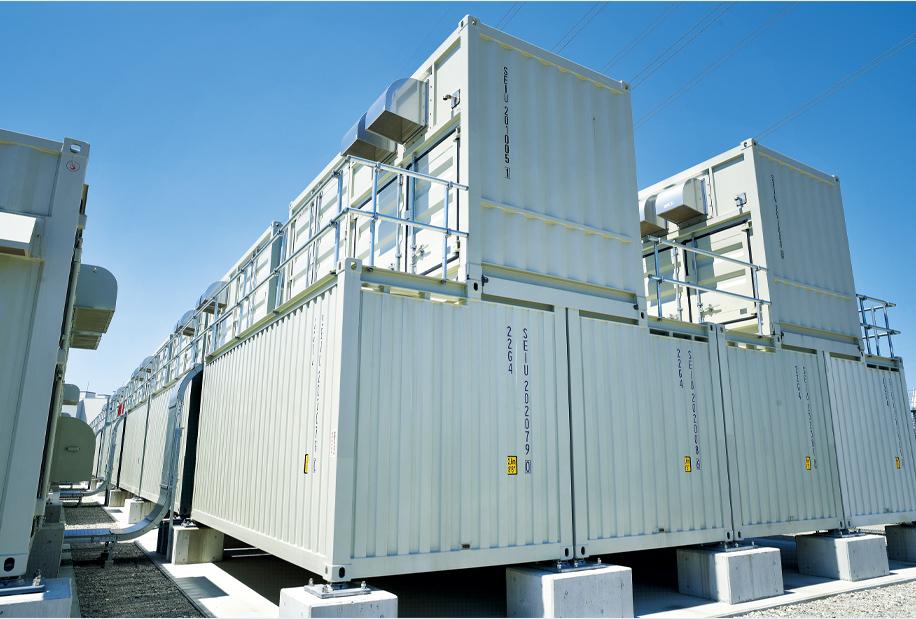Vanadium Redox Flow Batteries: Powering the Future of Energy Storage
In the quest for sustainable and reliable energy sources, energy storage technologies have emerged as a critical component of the modern energy landscape. Among these technologies, vanadium redox flow batteries (VRFBs) have gained significant attention for their unique advantages and potential to revolutionise energy storage systems. With their ability to store large amounts of energy, provide long cycle life, and enhance grid stability, VRFBs are poised to play a pivotal role in shaping the future of renewable energy integration and grid management.
Understanding Vanadium Redox Flow Batteries
At the heart of energy storage systems, batteries are designed to store electrical energy and release it when needed. Traditional lithium-ion batteries have found extensive use in portable electronics and electric vehicles, but they face limitations when it comes to storing large amounts of energy for extended periods. This is where VRFBs step in.
Vanadium redox flow batteries operate on a fundamentally different principle from lithium-ion batteries. Instead of relying on solid electrodes, VRFBs use liquid electrolytes containing vanadium ions in different oxidation states (valence states). These electrolytes are stored in separate tanks and pumped through the battery’s electrochemical cell when energy storage or discharge is required. The energy conversion and storage process takes place in the electrochemical cell, where two half-cells are connected by an ion-selective membrane.
Advantages of VRFBs
- Scalability: One of the primary advantages of VRFBs is their scalability. Unlike some battery technologies where adding capacity might involve complex modifications, VRFBs can simply increase their storage capacity by using larger tanks for electrolyte storage. This feature makes them particularly suitable for applications requiring high-capacity energy storage, such as grid-scale installations.
- Long Cycle Life: VRFBs exhibit exceptional cycle life compared to many other battery technologies. This is because the energy storage and discharge processes occur in the liquid electrolyte, not in solid electrodes, reducing the mechanical stress that can degrade the battery over time. VRFBs can endure thousands of charge-discharge cycles with minimal degradation, making them ideal for long-term energy storage needs.
- Deep Discharge Capability: VRFBs can be discharged almost completely without harming their overall lifespan. This is a significant advantage for applications where occasional deep discharges are necessary, such as in backup power systems or renewable energy integration.
- Enhancing Grid Stability: The intermittent nature of renewable energy sources like solar and wind creates challenges for grid stability. VRFBs can store excess energy generated during periods of high renewable output and release it during peak demand, thereby acting as a buffer to stabilize the grid and ensure a consistent power supply.
- Safety and Environmental Impact: VRFBs use water-based electrolytes containing vanadium salts, which are non-flammable and non-toxic. This greatly enhances their safety profile compared to some other battery chemistries that use hazardous materials. Additionally, the vanadium electrolytes can be recycled, reducing the environmental impact of battery disposal.
Applications of VRFBs
The versatility of VRFBs opens up a wide range of applications across various sectors:
- Renewable Energy Integration: One of the most promising applications of VRFBs is in the integration of renewable energy sources into the grid. VRFBs can store excess energy generated during sunny or windy periods and release it during low energy production periods, effectively overcoming the intermittency of renewables.
- Microgrids and Remote Areas: In remote areas or microgrid setups, where a stable power supply might not be readily available, VRFBs can store energy from intermittent sources and provide consistent power to critical infrastructure, reducing the reliance on fossil fuel generators.
- Industrial and Commercial Use: VRFBs can help industries manage their energy consumption by storing electricity during off-peak hours when energy costs are lower and using it during high-demand periods when electricity prices are higher.
- Utility-Scale Energy Storage: The scalability and long cycle life of VRFBs make them an attractive option for utility-scale energy storage projects. They can store excess energy during times of low demand and release it during peak demand, helping utilities optimize their energy distribution.
- Uninterruptible Power Supplies (UPS): VRFBs can provide reliable backup power in case of grid failures, ensuring uninterrupted operations for critical facilities like hospitals, data centers, and emergency response centers.
Vanadium redox flow batteries have emerged as a promising energy storage solution with the potential to reshape the way we store and manage electricity. Their scalability, long cycle life, deep discharge capability, and grid-stabilizing features position them as a key player in the transition towards a more sustainable and reliable energy future. As research and development efforts continue, we will see the full potential of VRFBs and integrating them seamlessly into our energy infrastructure. With their unique set of advantages, VRFBs are poised to play a vital role in driving the adoption of renewable energy sources and enhancing grid resilience on a global scale.





